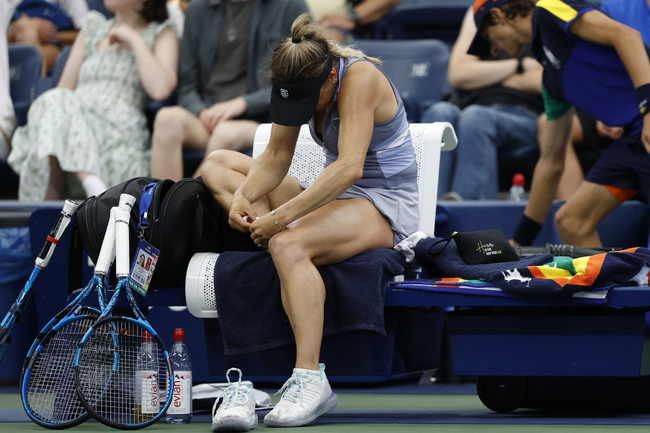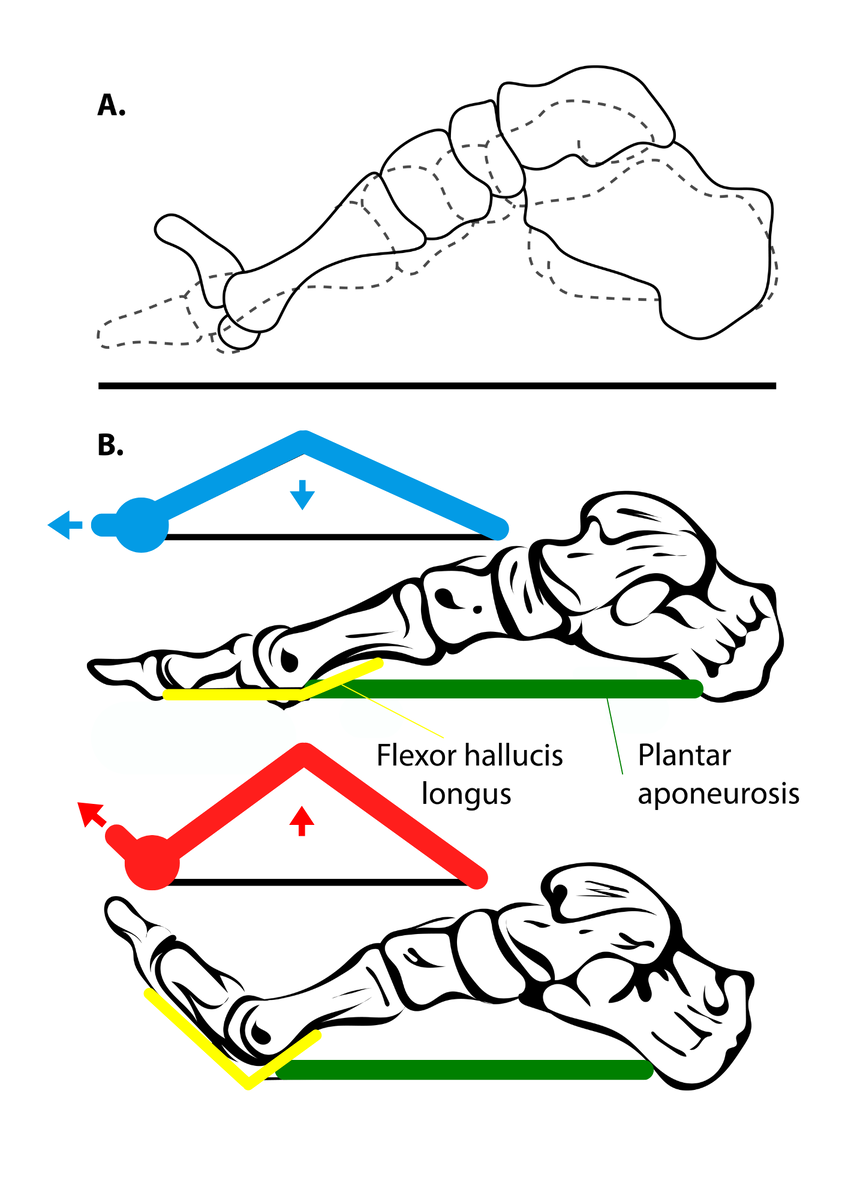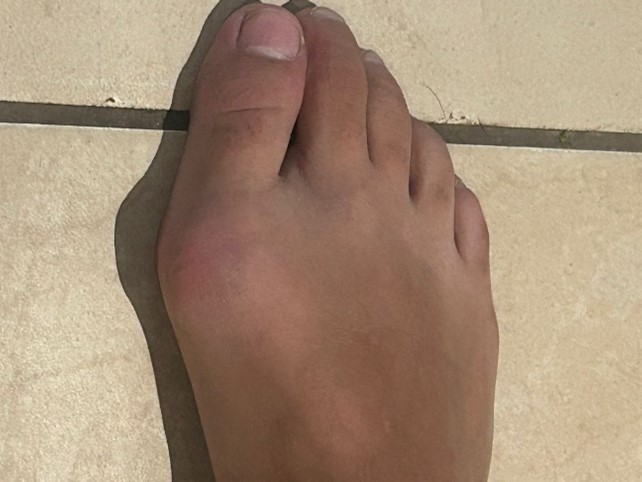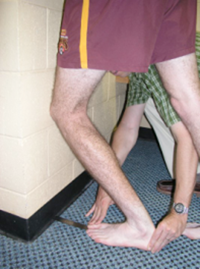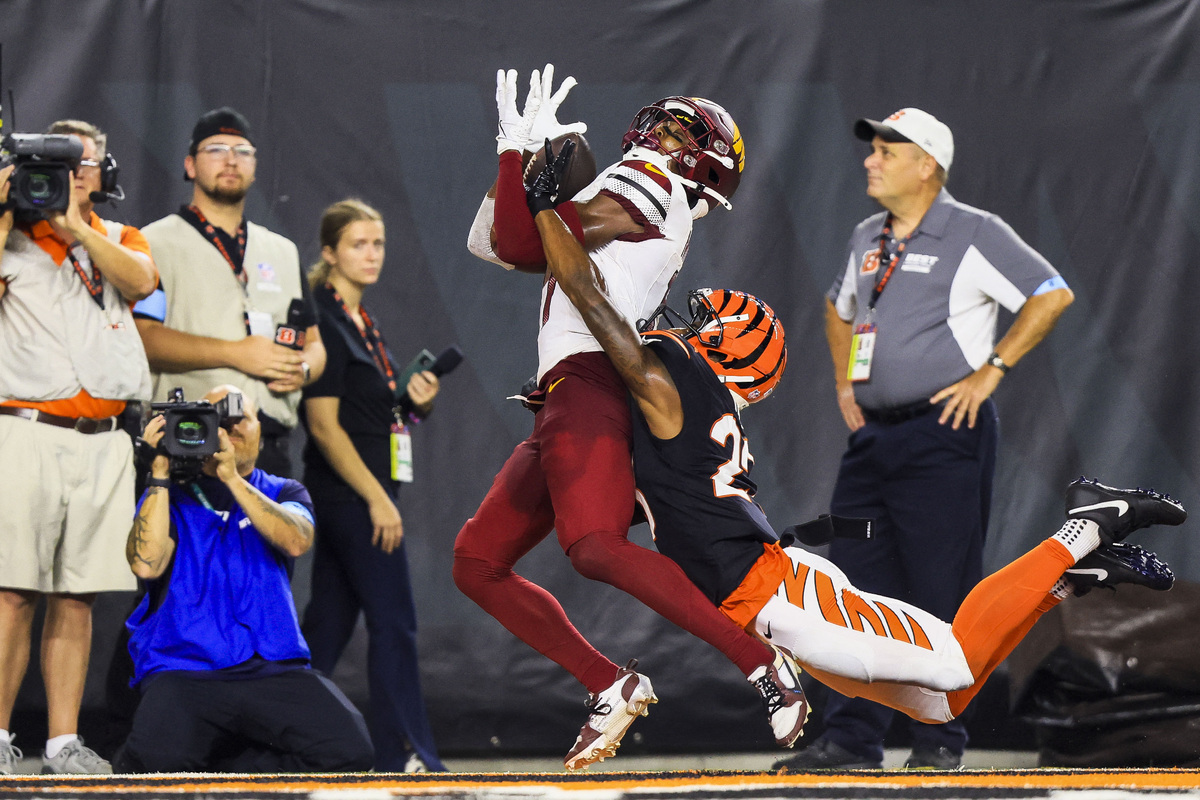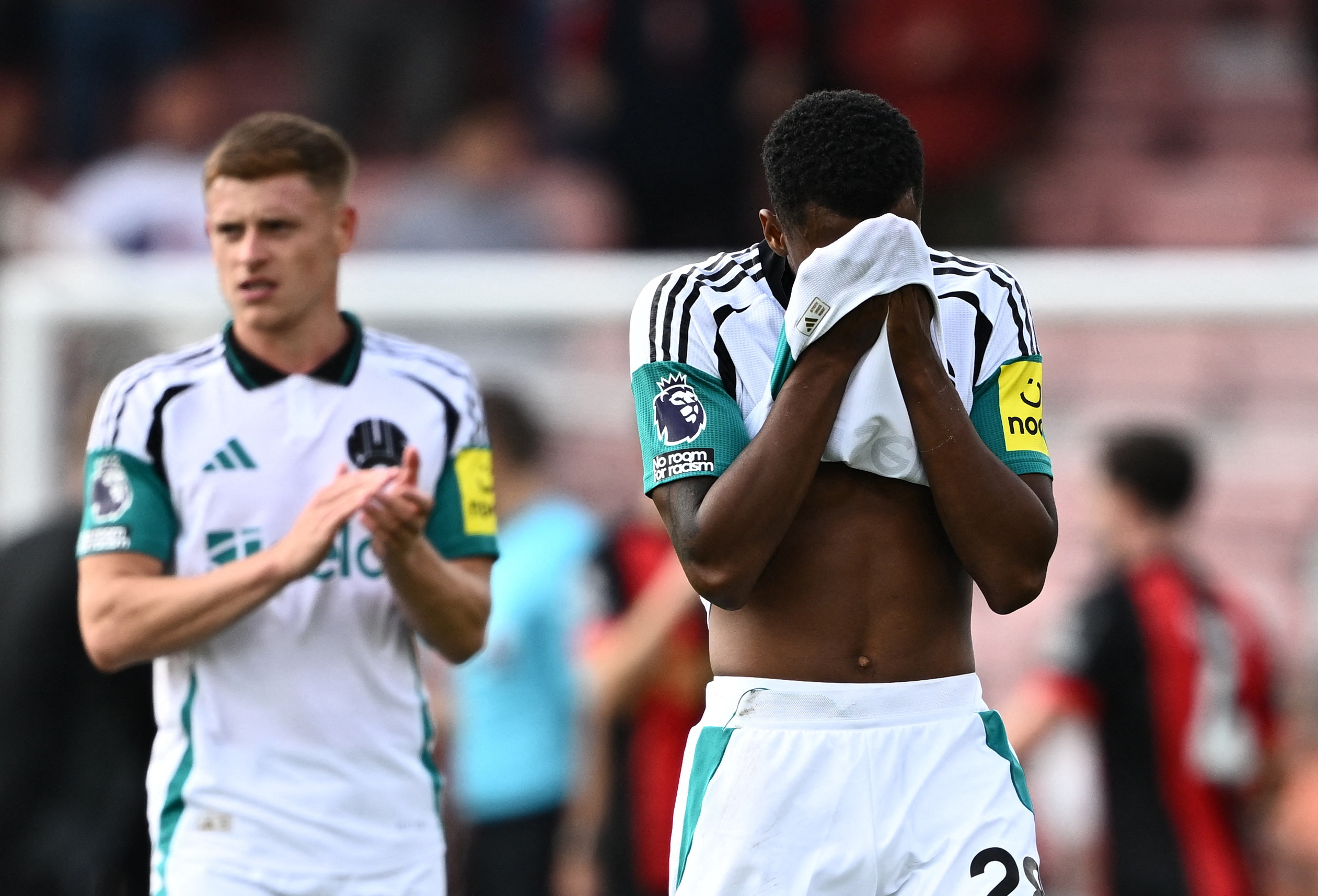You are viewing 1 of your 1 free articles
Managing Hallux Valgus in Athletes
Managing hallux valgus in athletes presents unique challenges, especially when high-level performance and career longevity are at stake. Lindsay Harris explores the dynamics of hallux valgus in athletes, examining the balance between conservative treatments and the decision to proceed with surgery.
Yulia Putinseva examines her foot during a changeover against Jasmine Paolini (not pictured) in a women’s singles match on day six of the 2024 U.S. Open tennis tournament. Mandatory Credit: Geoff Burke-USA TODAY Sport
Hallux valgus marked by a complex deformity of the first metatarsal phalangeal joint, and often leads to pain and dysfunction, potentially impacting an athlete’s ability to compete. When athletes are on the on the verge of opting for surgery, the question arises: is conservative management a viable alternative, or is surgical intervention inevitable?
Hallux valgus, commonly associated with a medial prominence or "bunion," is a multifaceted condition. Beyond the visible deformity, it involves intricate biomechanical alterations that can disrupt efficient movement, particularly during gait. While factors such as footwear, genetics, and joint hypermobility contribute to its development, managing the condition—especially in athletes—requires a nuanced approach.
The key lies in addressing the structural deformity and the compensatory patterns that develop, which can lead to further complications. Hallux valgus is a common condition that results from a complex positional deformity of the first ray. The bunion or medial prominence that results from the lateral deviation and pronation of the hallux is only one component of the three-dimensional deformity(1).
The precise biomechanical etiology remains unclear. A number of factors have been identified that create a predisposition for the development of hallux valgus. It is more common in females, which is likely related to differences in footwear, osseous anatomy, and generalized ligamentous laxity. The prevalence of hallux valgus increases with age because of the alterations in joint mechanics and plantar loading patterns. A strong genetic predisposition is also present(1). Furthermore, metatarsus adductus, equinus contracture, hammertoe deformity, and pes planus often coexist with hallux valgus.
Biomechanics
The first metatarsophalangeal joint (MTPJ) functions as a vital pivot for body weight transfer during the late stance phase of gait. It is plausible that progressive subluxation of the first MTPJ interferes with efficient toe-off and altered plantar pressures(2). Deceased ankle dorsiflexion and rearfoot supination in the terminal gait phase may be present in athletes with hallux valgus. Moreover, they display increased intrinsic muscle activity on heel strike. A less stable gait with a shorter stride length also presents – which may be present as a compensatory mechanism(2).
The foot and ankle complex achieves stability from active (dynamic) structures, including the muscles and tendons, and passive structures, including the osseous structure, cartilaginous linings, ligaments, and capsules. The foot functions optimally in a neutral position. The stability is provided by the intrinsic and extrinsic muscle activity. The windlass mechanism is one of the mechanisms contributing to the foot’s stability (see figure 1). It is important during gait as it provides stability for shock absorption on heel strike and acts as a lever to propel forward in toe-off.
An effective windlass mechanism allows the plantar fascia to tighten when the toes dorsiflex due to the fascial band wrapping around the metatarsal joints. This pulls the toes and the heel closer together, raising the foot arch and compacting the tarsal bones to form a strong, rigid level. The foot is now supinated. As the windlass mechanism relaxes, the foot pronates, the toes plantarflex, and the arch flattens – allowing the foot to become more mobile(3).
During different parts of gait, athletes require a supinated rigid foot on heel strike and toe-off and a pronated mobile foot in stance as they adapt to the terrain. The demand for this mechanism increases as a greater load is placed on the kinetic chain of function.
Most land-based sports require a toe-off for acceleration and speed. Toe off is the final part of the gait cycle. The heel lifts off, and the toe joints dorsiflex, activating the windlass to re-supinate the foot. This supinated foot forms a rigid lever for push-off. The stored energy in the fascia is released, and the elastic properties of the foot’s arch assist with the propulsion and force forward(3).
Several dysfunctional patterns may occur when the windlass mechanism does not perform optimally. Failure forces the extrinsic muscles of the foot to act as stabilizers rather than mobilizers. Muscle function and patterning contribute to the optimal output at any joint. As we tend away from this, we tend towards dysfunctional patterns.
These compensations may allow athletes to continue functioning in the short term. However, their injury risk increases over longer periods due to inefficiencies that place the musculoskeletal system under loads it cannot withstand. For example, instead of the tibialis posterior stabilizing the foot, flexor halluces longus and digitorum start compensating. The muscle tension further contributes to the loss of first toe extension. The pain extends from being local and over the first hallux’s medial aspect to the foot’s dorsal aspect and up the posterior and medial aspect of the foot and leg(4). Musculotendinous overload becomes risky, particularly in the posterior fascial lines and up the kinetic chain(4).
Assessment
Athletes with hallux valgus often exhibit compensatory gait patterns, most notably by avoiding toe-off and shifting weight to the lateral aspect of the foot. This altered mechanics may result in a flatter, less efficient gait. Alongside these changes, the medial aspect of the first hallux typically presents with inflammation and warmth, indicative of the hallux valgus deformity (see figure 2). Pain and tenderness are often localized around the plantar surface of the first metatarsal head, extending along the plantar fascia and up the posterior fascial line(1).
The first hallux’s range of motion is significantly reduced, with the joint failing to achieve 90 degrees of extension required for optimal foot function. This can be confirmed through an asymmetrical weight-bearing lunge test, where discomfort is felt along the posterior line (involving the Achilles tendon, calf muscles, and plantar aspect of the foot) (see figure 3). Furthermore, loss of plantar fascia length and posterior chain flexibility contributes to impaired balance and stability, particularly during single-leg stance assessments, where the athlete struggles to maintain equilibrium(1).
Conservative management
Conservative management of hallux valgus focuses on addressing the dysfunction and compensatory patterns that arise from the deformity, even though its precise causes remain uncertain. The key is to restore and maintain the range of motion in the first metatarsal joint, aiming for optimal bilateral extension to support efficient movement. Activating and strengthening the stabilizing muscles of the foot is essential, as this ensures a neutral stance, providing a stable foundation for all other movements.
Treatment should prioritize the intrinsic muscles of the foot, followed by the extrinsic muscles of the foot and ankle, to enhance overall stability. Maintaining a symmetrical posterior chain length—extending from the plantar fascia and windlass mechanism up through the leg—is crucial for preventing further dysfunction. External factors, such as footwear, should also be considered, focusing on ensuring proper width and support to reduce stress on the foot and promote long-term stability.
Surgical management
Surgery is always an option; however, there are numerous associated complications. Recurrence is the most common complication, with rates ranging from as low as 8% to as high as 78%(1). Researchers at the Chinese University of Hong Kong conducted a systematic review and meta-analysis to assess forefoot function after hallux valgus surgery. The results demonstrate that while surgery effectively corrects skeletal alignment, their impact on plantar load, which is crucial for forefoot function, remains unclear. Furthermore, the results revealed that HV surgeries generally reduced the plantar load over the hallux, indicating a deterioration in forefoot function post-surgery.
The meta-analysis results demonstrate that surgery may improve structural alignment, however it does not improve forefoot function and may worsen plantar load distribution, particularly in the hallux region(5).
Conclusion
While conservative treatment is not always successful, it remains the primary strategy when managing hallux valgus athletes. Clinicians should aim to obtain symmetry in both structure and function. They must ensure that the conservative management strategy is clear and properly followed. Once the kinetic chain biomechanics and capacity have been optimized, clinicians should gradually reintroduce athletes to sport. If they do not adapt appropriately, they may consider an orthopedic opinion. Athletes must consider the long-term impact on their performance when considering surgery.
References
1. Foot & Ankle Orthopaedics. 2019, Vol. 4(2) 1-12. Hallux Valgus
2. Journal of Foot and Ankle Research 2013, 6:9 Gait analysis
3. Foot and Ankle Surgery 2024, 30: 457 – 464.
4. Anatomy Trains. 2nd Edition. Thomas. W Myers.
5. J. Clin. Med. 2023, 12, 1384.
Newsletter Sign Up
Subscriber Testimonials
Dr. Alexandra Fandetti-Robin, Back & Body Chiropractic
Elspeth Cowell MSCh DpodM SRCh HCPC reg
William Hunter, Nuffield Health
Newsletter Sign Up
Coaches Testimonials
Dr. Alexandra Fandetti-Robin, Back & Body Chiropractic
Elspeth Cowell MSCh DpodM SRCh HCPC reg
William Hunter, Nuffield Health
Be at the leading edge of sports injury management
Our international team of qualified experts (see above) spend hours poring over scores of technical journals and medical papers that even the most interested professionals don't have time to read.
For 17 years, we've helped hard-working physiotherapists and sports professionals like you, overwhelmed by the vast amount of new research, bring science to their treatment. Sports Injury Bulletin is the ideal resource for practitioners too busy to cull through all the monthly journals to find meaningful and applicable studies.
*includes 3 coaching manuals
Get Inspired
All the latest techniques and approaches
Sports Injury Bulletin brings together a worldwide panel of experts – including physiotherapists, doctors, researchers and sports scientists. Together we deliver everything you need to help your clients avoid – or recover as quickly as possible from – injuries.
We strip away the scientific jargon and deliver you easy-to-follow training exercises, nutrition tips, psychological strategies and recovery programmes and exercises in plain English.
